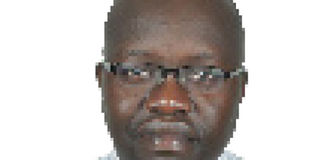Expand and fund Uganda National Health Research Organisation

The government has set its eyes on achieving lower middle income status by 2020. As part of this initiative, government has taken a strategic decision to promote the sciences. What Uganda is lacking in the proposed science-based economy, however, is adequate investment in research and development (R&D).
Countries which have maintained the highest investments in research over the years have the most advanced economies. Currently, Israel with 4.1 per cent, leads in investing in R&D. In its study, ‘How much do countries invest in R&D?’ Unesco concluded that ‘Innovation is key to achieving each of the Sustainable Development Goals (SDGs).
Specifically, SDG nine calls on governments to promote sustainable industrialisation and innovation by ramping up spending on R&D and increasing the number of researchers. Each region is to set its own target.
Europe set this at 3 per cent of GDP. At the African Union Heads of State Summit in 2006, leaders pledged to commit 1 per cent of each country’s GDP to research. Twelve years later, only three countries – Kenya, Mali and South Africa, have met this target.
Governments of most advanced countries have established and continue to offer substantial funding to health research institutes.
In the USA, there is the National Institutes of Health; in the UK and South Africa, the Medical Research Councils, and in Kenya, the Kenya Medical Research Institute (KEMRI).
KEMRI is composed of 10 centres each addressing specific health problems. Scientists are employed at different levels of seniority and conduct cutting edge research. The Kenyan government recently proposed to increase its research funding to 2 per cent of GDP and KEMRI will be a major beneficiary.
KEMRI also innovatively allowed each centre to collaborate with an international body to support its research. I undertook my PhD research in the coastal town of Kilifi at a centre that is collaborating with University of Oxford and the Wellcome Trust to study childhood illnesses. With now over 25 years investment, the laboratory facilities in Kilifi can challenge any lab around the world.
In Uganda, more than 60 per cent of health research is conducted by Makerere University and most of this is funded by external agencies. The findings of these research is not only creating solutions to critical health issues, but also employs hundreds of young scientists.
For example, research by the university’s Rakai Health Project has provided ground-breaking lessons in our understanding of HIV today.
My research group is working in Kitgum, Pader and Lamwo districts to find a cure for nodding syndrome. In Kamuli, Jinja, Mubende, Masaka and Hoima hospitals, we are testing treatments for children who have suffered severe anaemia, and in Mulago, we are studying brain injury and stroke in sickle cell disease.
The Uganda National Health Research Organisation (UNHRO), was created with similar vision to research institutes in other countries. UNHRO is composed of Uganda Virus Research Institute (UVRI), Uganda Cancer Institute, the National Chemotherapeutic Research Institute and the Tropical Diseases Research Institute.
The Tropical Institute is yet to be established. Clearly, the range of institutes is limited. It is time we became ambitious, offered substantial funding to, and expanded UNHRO.
Additional centres for Non-Communicable diseases, Neuroscience and Mental Health, and Biomedical engineering, Biologics and technology assisted innovations are needed.
Each centre can seek for raw talent, train PhD students, develop expertise and employ people with a range of skills and the nation will experience the benefits in the not so far future.
The successes achieved by funding Uganda Virus Research Institute and the National Agricultural Research Organisation should be an inspiration for all these.
Dr Richard Idro is a senior lecturer,
Department of Paediatrics and Child Health, College of Health Sciences, Makerere
University.




